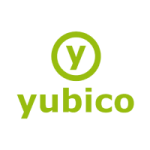What is Strong Authentication?
Strong Authentication combines 2 or more methods of authenticating your identity.
These secondary security measures are generally divided into 3 factors:

Something You Know (knowledge factor)
Personal information that only the user knows such as passwords, PINs, security questions, etc.Something You Have (Possession Factor)
Robust automatic data encryption both in transit and at rest.Something You Are (Inherence Factor)
Monitoring of security infrastructure such as user activity to assess security status.What is Public Key Infrastructure?
Public Key Infrastructure (PKI) is the technology behind digital certificates, an encryption mechanism that relies upon the use of two keys – a public key and a private key – which, when paired, decrypts and transmits the original message.
A PKI implements 3 critical components:
Certificate Authority (CA)
This component acts as the issuer and signee of the digital certificates, and is trusted by all other entities.Registration Authority (RA)
This is where the identity of the owners’ digital certificates are registered and cross-checked before it is issued by the CA.Validation Authority (VA)
This component confirms that a certificate is still valid and has not been revokedWhat is Cloud Security?
Cloud security is a framework of solutions to safeguard cloud-based data and infrastructure
An effective cloud security framework includes:
Authentication controls
Seek or prevent unauthorized access, and automate privilege management.Data encryption
Robust automatic data encryption both in transit and at rest.Centralized visibility
Monitoring of security infrastructure such as user activity to assess security status.Threat Management
Allows for quick proactive risk mitigation or implement reactionary measuresSeamless integration
Integrate with existing security protocols to ensure a smooth operational process.What is Identity & Access Management ?
IAM is a 2-part authentication solution. Identity management: confirms who you are Access management: grants you the appropriate level of access.
Key elements in an IAM framework include:
Single Sign-On
One set of credentials for all access areasMulti-Factor Authentication (MFA)
Multi-layered process for increased filtration and securityUser lifecycle management
IAM tools to quickly appropriate access to users based on job functions.Reporting
Easy generation of reports and logs to assess future risks as well as ensure compliance.